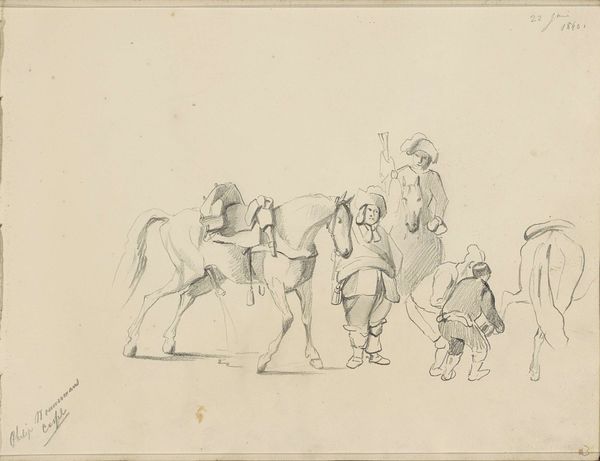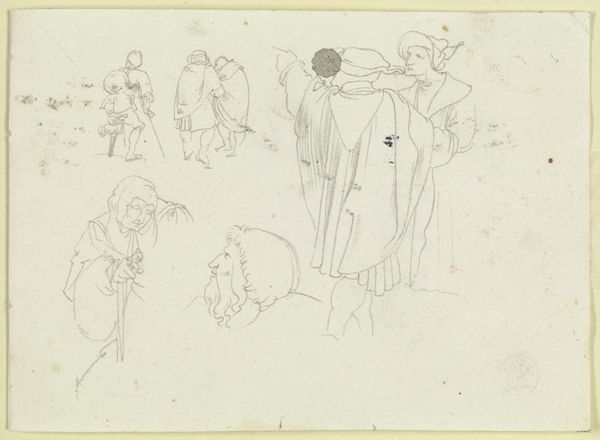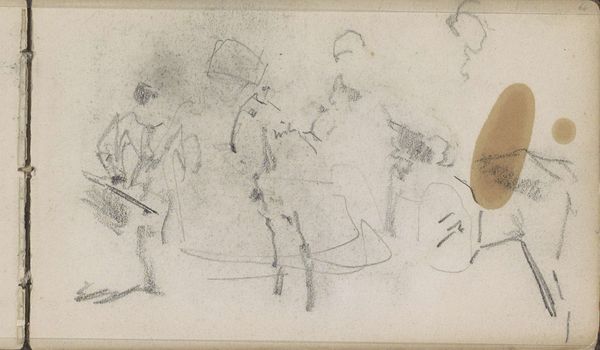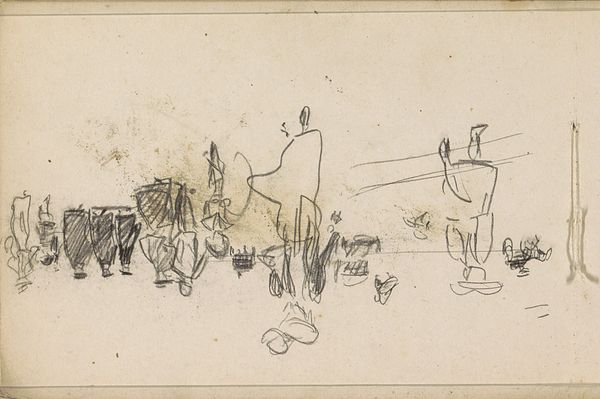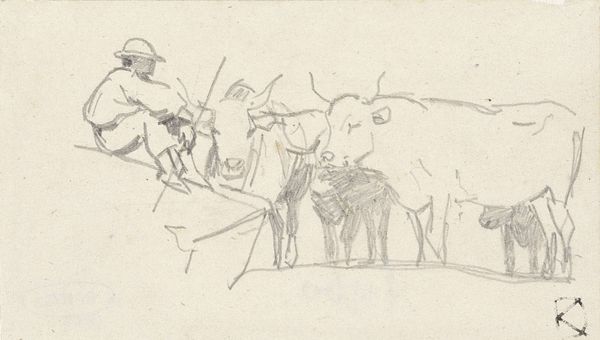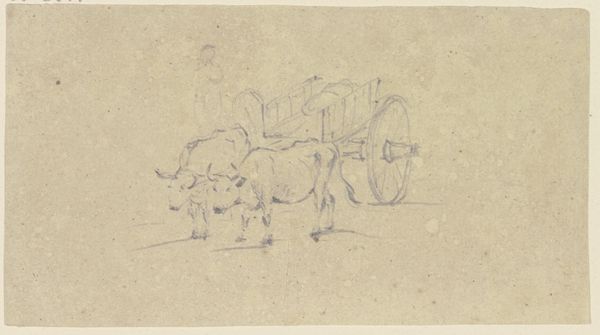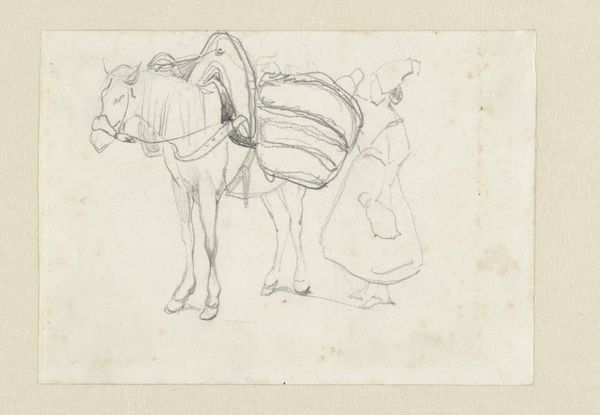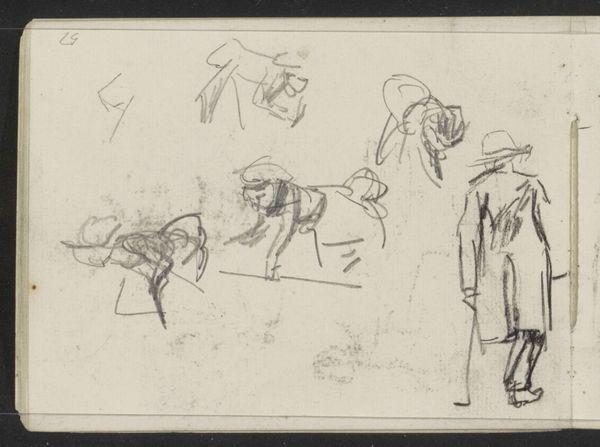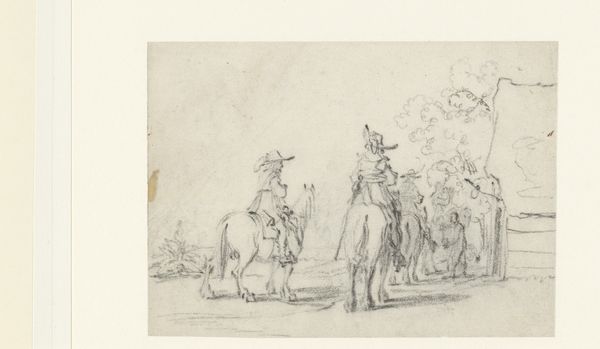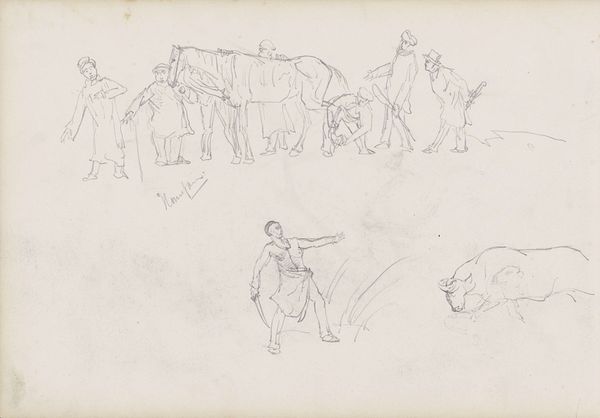
drawing, pencil
#
drawing
#
impressionism
#
figuration
#
pencil
Copyright: Rijks Museum: Open Domain
Curator: This is George Hendrik Breitner's "Figuurstudies, mogelijk vissersvrouwen," or "Figure Studies, possibly Fisherwomen," a pencil drawing from around 1880 to 1882, now residing here at the Rijksmuseum. Editor: Immediately, I see a sense of quiet observation. The almost hurried lines of the figures lend it a certain fragility. It feels less about documentation and more about fleeting impressions, particularly regarding women who perhaps hold a lower, unseen social status. Curator: Precisely. Breitner was known for his impressionistic style and his interest in capturing everyday life, often depicting working-class subjects. Consider the rise of social realism in art during that era, mirroring the burgeoning socialist movements that sought to bring attention to the working class's plight. This piece invites us to engage with the intersection of gender and labor during the late 19th century, focusing on women whose existence and labor might have been overlooked or undervalued within mainstream artistic and societal contexts. Editor: I am drawn to the way Breitner uses these loose, suggestive lines to portray the fisherwomen. It’s not about photographic accuracy but more of capturing their essence, maybe even alluding to their lack of distinct individual power under male dominated society. Their figures seem to blend in with the surrounding space, as if they are being swallowed by a collective, almost a shared identity born from work. There’s an inherent commentary about gendered spaces here, and their limited possibility of socio-economic advancement. Curator: Absolutely, and if you think about how museums and art institutions at the time either excluded women artists, or simply did not buy art with such loaded symbolism, it does say quite a lot. It's crucial to remember the socio-political context and these artistic choices, what was publicly acceptable as ‘good art,’ and the challenges faced by artists who defied the accepted social narrative. Editor: Seeing this sketch invites me to re-think whose history we're telling in art, whose bodies we valorize, and how we can begin the crucial task of understanding the laboring and marginalized woman throughout history. Curator: Agreed. Reflecting on its place here, this image reminds me that art, in its public presentation, remains in continuous dialogue with the present.
Comments
No comments
Be the first to comment and join the conversation on the ultimate creative platform.
